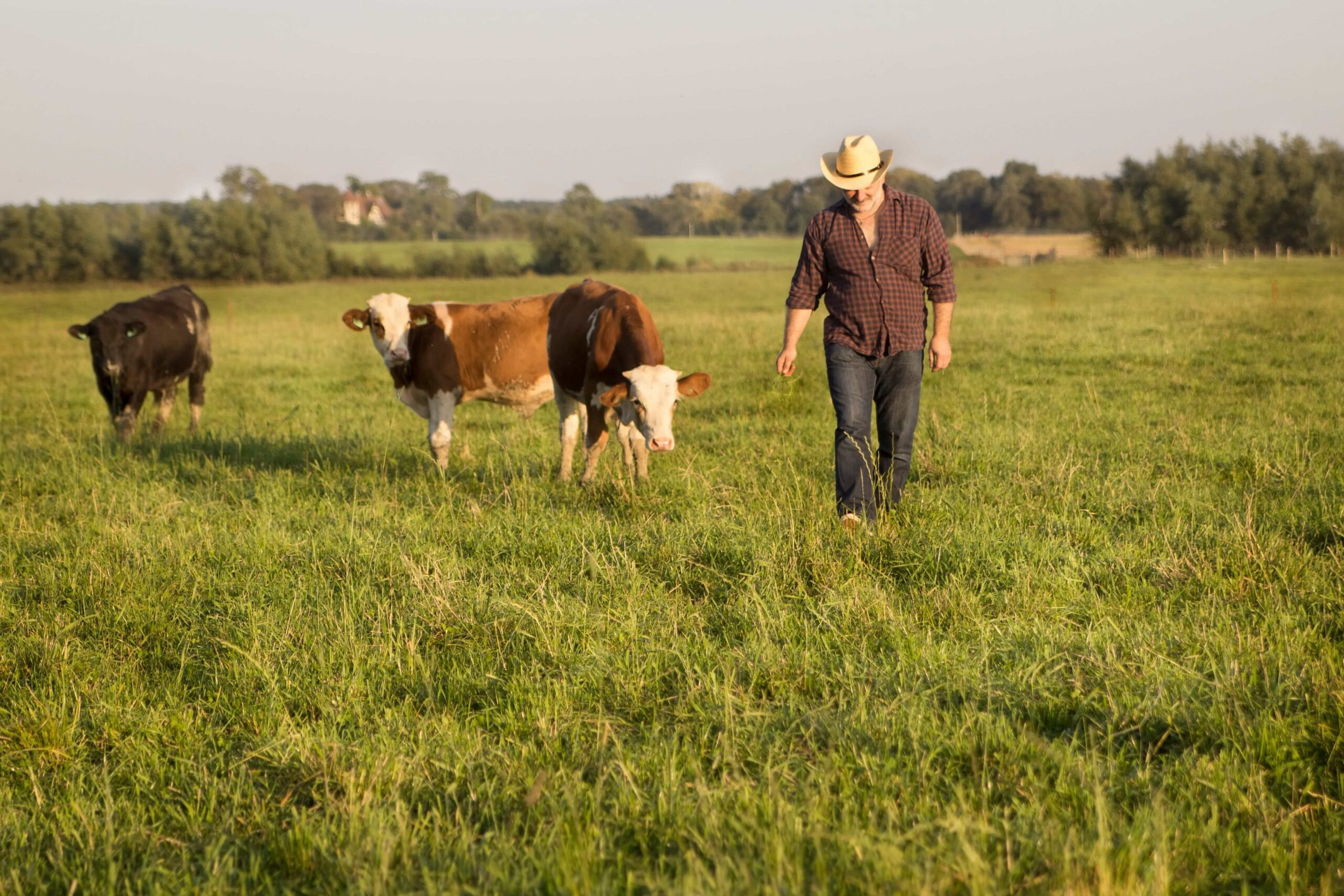How Regenerative Farming Works & The Benefits It Can Provide
By : Rita Stadler
The modern agricultural industry faces a seemingly impossible challenge: create a high enough yield of nutritious products to make hunger a thing of the past — while minimizing environmental degradation.
These last few centuries, mankind has clearly excelled at the former while oftentimes neglecting the latter. Conventional farming practices feed billions of humans, but at a significant cost: limited biodiversity, increased soil erosion, excessive greenhouse gas emissions, and more.
Environmental challenges abound, but there’s no reason to lose hope just yet. Revitalized agricultural practices are continuing to provide a world of potential towards building a more sustainable food system. Regenerative farming, in particular, could help to transform the agricultural sector as we know it, demonstrating that it’s possible both to feed a hungry human population and act as responsible stewards.
Technically speaking, the concept of regenerative agriculture is far from new. Indigenous communities have emphasized these practices for millennia. Their insight has proven valuable as regenerative solutions finally receive the respect they deserve. As the modern agricultural sector adopts this mindset, we can expect more effective solutions to the greatest environmental concerns of our time.
What Is Regenerative Farming?
Simply put, regenerative farming is an agricultural philosophy that emphasizes conservation and rehabilitation. The ultimate goal is to farm in harmony with nature. This means utilizing a holistic approach that highlights the many connections between farming systems, the community, and the world around us. It’s a step towards achieving sustainability in our food production initiatives.
Harnessing the power of photosynthesis, regenerative farming nods to the simple concept of plants pulling carbon dioxide from the air. It stands to reason, then, that a greater wealth of plant life will exacerbate these effects, thereby combating some of the damage done by the large-scale human (and often, industrial) releases of carbon dioxide. This approach not only addresses carbon emissions but also positions the farmland as a carbon sink, absorbing more carbon than it releases.
What Are the Principles of Regenerative Agriculture?
Regenerative agriculture practices involve a diverse set of principles meant to target the many sources of environmental degradation that threaten our planet. These include:
- Avoid tilling to prevent soil disturbances. This land management practice once represented a core element of the agricultural process, but that has begun to change. It has increasingly become evident that tilling breaks up the structure of the soil and hastens the loss of organic matter. The result? A constant threat of erosion. The inherent fracturing of tillage also negatively impacts water infiltration while dramatically increasing the rate of runoff.
- Protect soil with cover crops. Simultaneously capable of boosting yields and keeping weeds to a minimum, cover crops represent an exciting opportunity for regenerative farmers to replace harmful chemicals with promising biological processes. Typically regarded as a supplement to main cash crops, these solutions can address many of the issues prompted by tillage. Prior to the use of herbicides, cover crops were used to great effect in a variety of settings and scenarios. Hardy winter options are common, with cereal rye and crimson clover, in particular, helping to keep soil in place.
- Promote eco-friendly grazing practices. Overgrazing is a huge issue, as it damages root systems, increases soil compaction, and leads to bare ground. This, in turn, prompts erosion, and ultimately, desertification. These days, best practices for grazing management closely resemble patterns seen in nature. Adaptive multi-paddock grazing (also known as rotational grazing) is especially effective, with grazing animals restricted to specific paddocks and then rotated over time. This gives grasses a resting period in which they can rejuvenate. Increasingly, livestock also graze on the aforementioned cover crops.
The Benefits of Regenerative Farming
Regenerative farming revitalizes degraded environments, improving soil health, air, and water quality. This sustainable approach not only boosts biodiversity and farm productivity but also reduces greenhouse gas emissions.
If properly implemented, this philosophy promises to revitalize environments that have been heavily damaged by conventional agriculture. Over time, this rejuvenation will not only improve soil health, air, and water quality, but also, boost profits.
- Healthier soil. As mentioned previously, conventional farming practices lead to compaction and soil degradation. This prompts erosion and the loss of fertile land. As a result, farmers are forced to do more with less. Regenerative farms promise to produce organic matter and improve soil structure. This will increase the presence of earthworms and useful insects, further enhancing soil fertility. And with more living organisms in the soil, water-holding capacity is also improved. Moving forward, this will be critical for the development of rich topsoil.
- Improved water quality and less water pollution. The heavy use of chemicals such as pesticides and herbicides has proven devastating for water quality. Pollution from industrial farms leads to runoff, washing into streams, rivers, and other bodies of water. The blend of chemicals and eroded soil found in this runoff ultimately threatens both wildlife and humans’ water supply. Regenerative farming boosts infiltration and reduces the need for harmful and expensive chemical inputs, so runoff is not only less likely, but also, less damaging.
- Greater biodiversity. There’s no secret that conventional monoculture farming limits biodiversity — the lack of diversity is built right into the name. Regenerative agriculture, however, emphasizes the very connections that previous practices sought to eliminate. This concept acknowledges that we are all part of a greater ecological system — and that every plant, microorganism, and insect has an important role to play. When we promote biodiversity, we strengthen the quality of the soil while allowing pollinators to do what they do best: promote a vibrant and healthy landscape that benefits many types of plants and animals.
- Increased farm productivity. Advocates for conventional farming practices point to high yields as proof of their method’s superiority. In reality, however, today’s factory farms are not nearly as productive as they could be. Poor soil quality is largely to blame — but even if the soil magically improved on its own, monoculture will always be limited in scope as compared to operations with cover crops.
- Fewer greenhouse gas emissions. Regenerative farming limits the need for tools and processes that emit harmful greenhouse gasses that contribute to climate change. Meanwhile, healthier soil is able to capture higher levels of carbon dioxide through carbon sequestration. Between fewer emissions and higher rates of carbon capture, we could significantly decrease our carbon footprint.
Common Regenerative Farming Practices & Techniques
A variety of practices can play into modern regenerative farming. While certain approaches are all but universally beneficial to growers, others may require more targeted application based on the local climate and soil conditions. In general, however, these techniques hold the power to revitalize agriculture and promote biodiversity:
- Composting. A blend of carbon-rich and nitrogen-rich materials (often in the form of crop residues, food scraps, and manure) can deliver quality organic materials that, in the absence of healthy topsoil, are especially important. Composting limits the need for synthetic fertilizers and, over time, boosts soil quality.
- Crop rotation. Modern farms should plant crops sequentially and rotate regularly to limit damage to the soil. Otherwise, relying on a single crop for too long can remove much-needed nutrients from the soil while creating a permanent home for pests and weeds. Crop rotation provides a greater sense of balance and can also increase farm productivity. A rotational approach should also be incorporated for grazing.
- No-till farming. It’s possible to successfully farm without tilling, but viable alternatives will need to be explored. Without frequent tillage, cover crops should be used to maintain soil levels and quality. Patience is also essential, as crop yields may temporarily decrease in the first few years after abandoning tillage. As the soil rebuilds, however, productivity may actually exceed that of a tillage-reliant farm.
- Agroforestry. Instant diversification can be achieved simply by incorporating trees and shrubs into agricultural operations. Known as agroforestry, this approach provides a valuable protective element: it shields soil, plants, and animals from extreme weather events, infestations, and more. This approach also makes swift progress towards many of the goals cited above, such as biodiversity, water infiltration, reduced erosion, and so on.
How This Can Help
At EarthKind, we believe that individuals hold the power to transform our world. Small changes towards living a more sustainable lifestyle can make a big difference. Whether you grow your own garden or purchase produce from eco-friendly operations, you can play a valuable role in revitalizing our farms and landscapes.
Another way to help preserve nature’s ecosystem at home is to overhaul your approach to pest control and management. We’re here to help. We offer a range of botanical pest repellent and deterrent products designed to keep unwanted insects and rodents out of your home — but without upsetting nature’s delicate balance.








